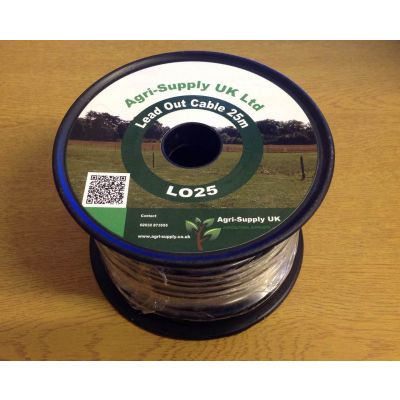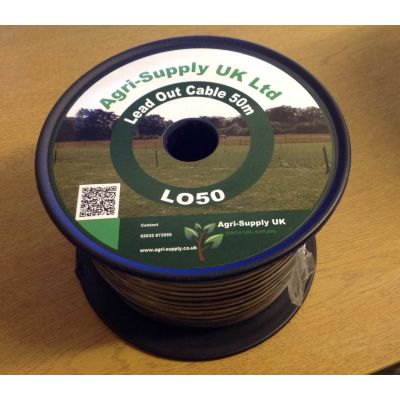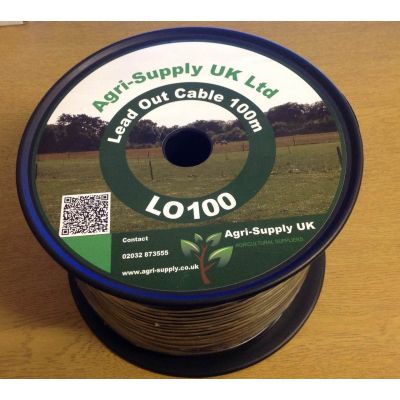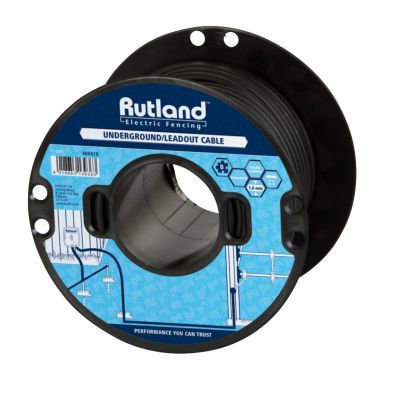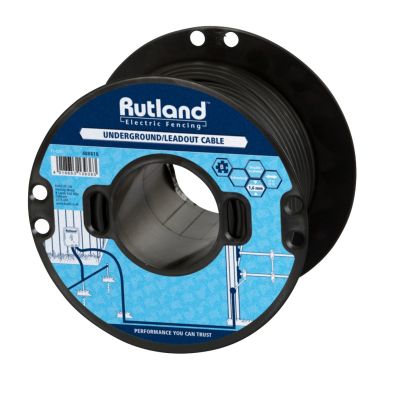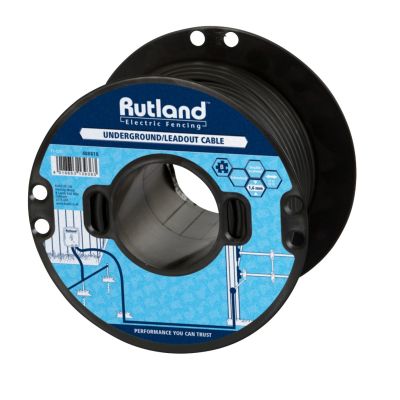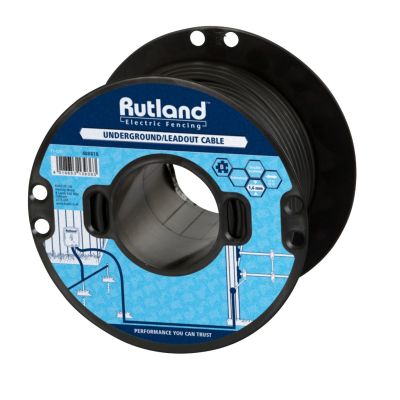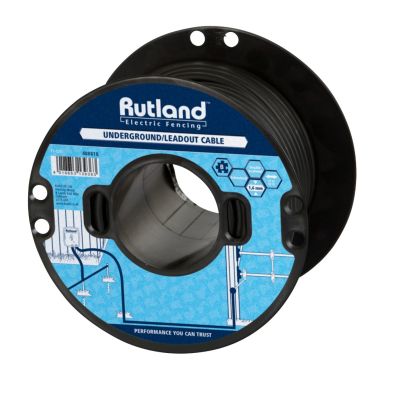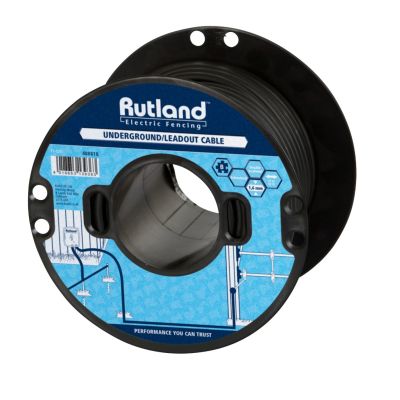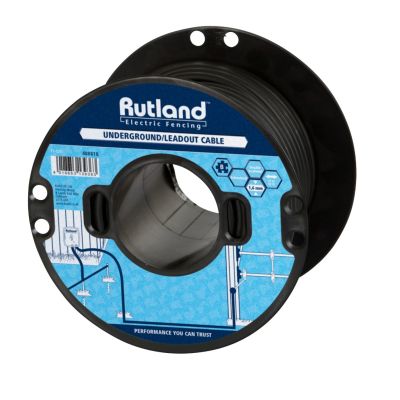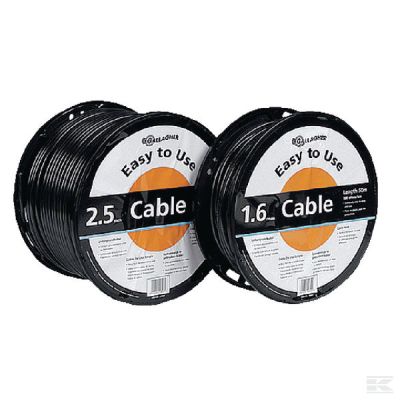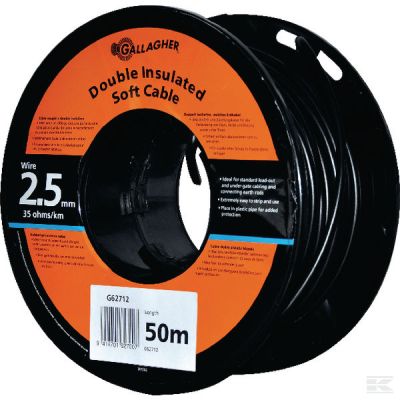Lead Out Cable
- Animal Husbandry 881
- Leisure 1846
- OX Wheelbarrows 40
- Workshop 1750
- Fasteners 6754
- Fencing 604
- Agricultural Machinery 6112
- Hoses. Pipes. Pumps & Fittings 79
- Tractors 25
- Brands 0
- Whats HOT 62
Lead out cable for mains electric fence systems. Lead out is double insulated cable designed for use with electric fence systems. Electricians cable is not designed for electric fencing so will not work effectively. In mains systems lead is used to transfer the current from the electric fence energiser to the fence. Also a small length is used to connect the fence energiser to the earth stake. Mains electric fence energisers are not provided with fence and earth leads as lead out cable is used instead. Lead out cable is available in 25, 50m and 100m rolls.
Electric fence lead out cable can be further protected by putting it through water whilst underground. This guards it from damage and also makes any maintenance or removal easy.
An electric fence lead-out cable is a heavy-duty insulated cable used to connect an electric fence energizer to the electric fence wires. It carries the high-voltage pulses from the energizer to the fence, where they deter animals from touching it. Lead-out cables are typically made of stranded copper or stainless steel wire, with a thick layer of polyethylene or PVC insulation to prevent electrical leakage.
When choosing a lead-out cable, it's important to consider the following factors:
- Length: The cable must be long enough to reach from the energizer to the furthest point of the fence.
- Thickness: The thickness of the cable should be matched to the size of the fence and the energizer's output.
- Insulation: The insulation must be thick enough to prevent electrical leakage, even in wet or humid conditions.
- Durability: The cable should be made of durable materials that can withstand the elements and animal abuse.
Once you've chosen a lead-out cable, it's important to install it correctly. The cable should be run along the outside of the fence posts, and it should be securely attached to the posts using cable ties or staples. If the cable must be run underground, it should be buried in a trench at least 6 inches deep.


